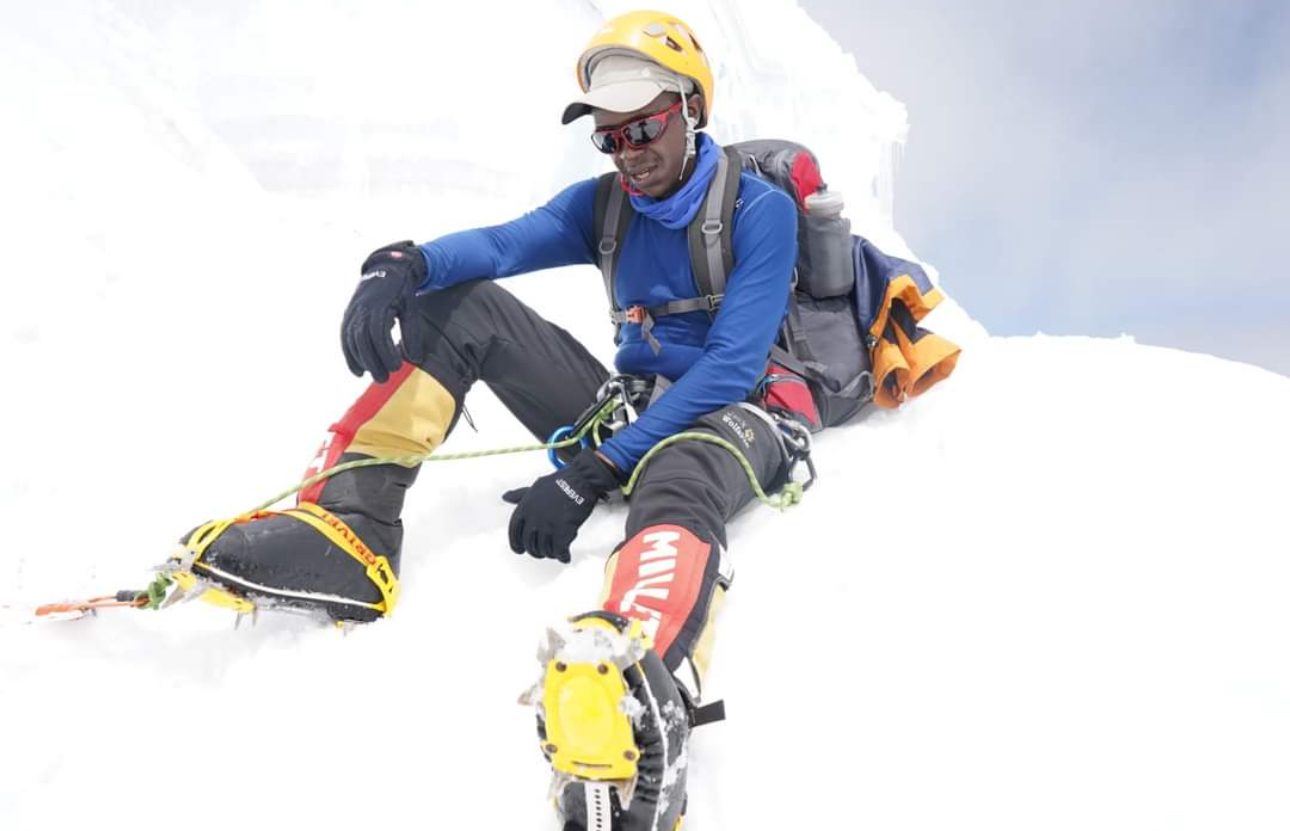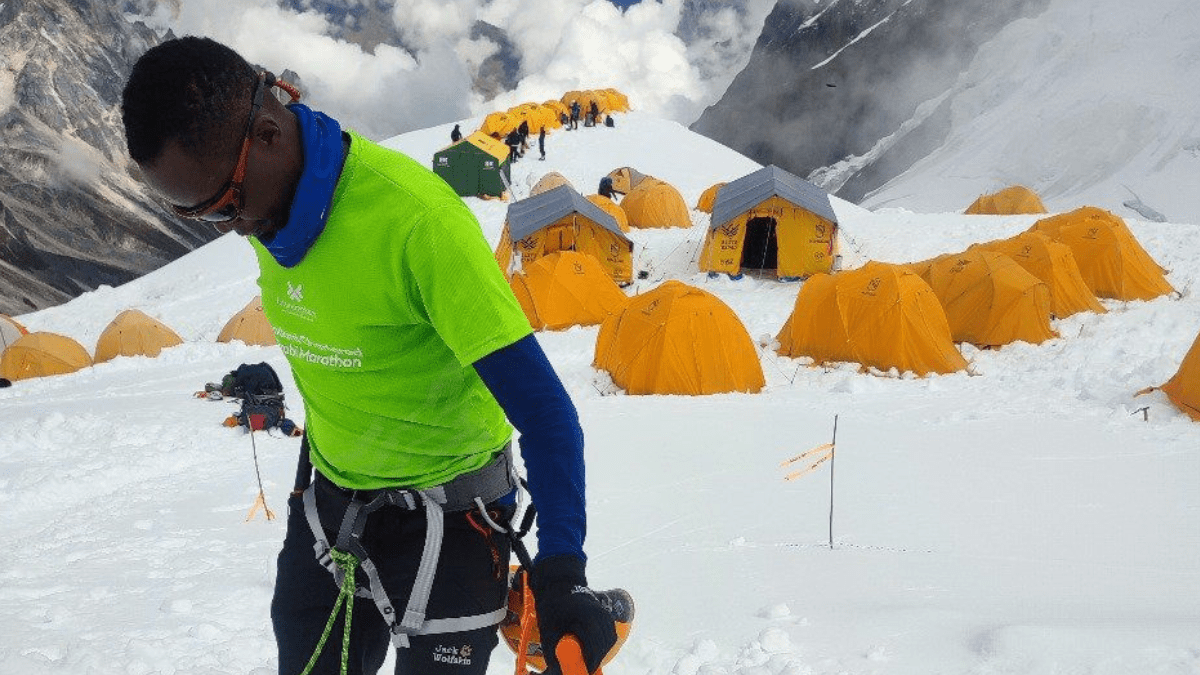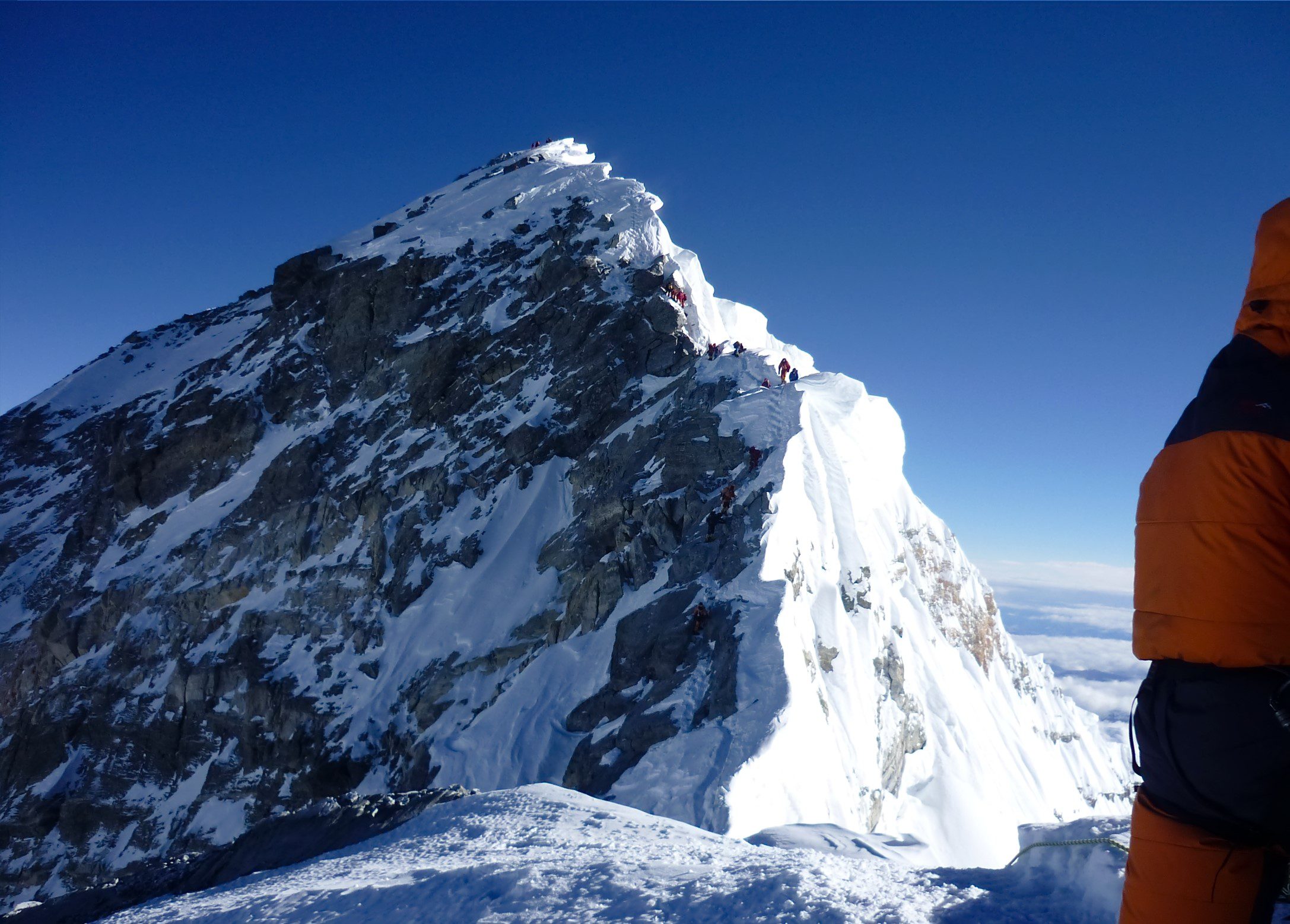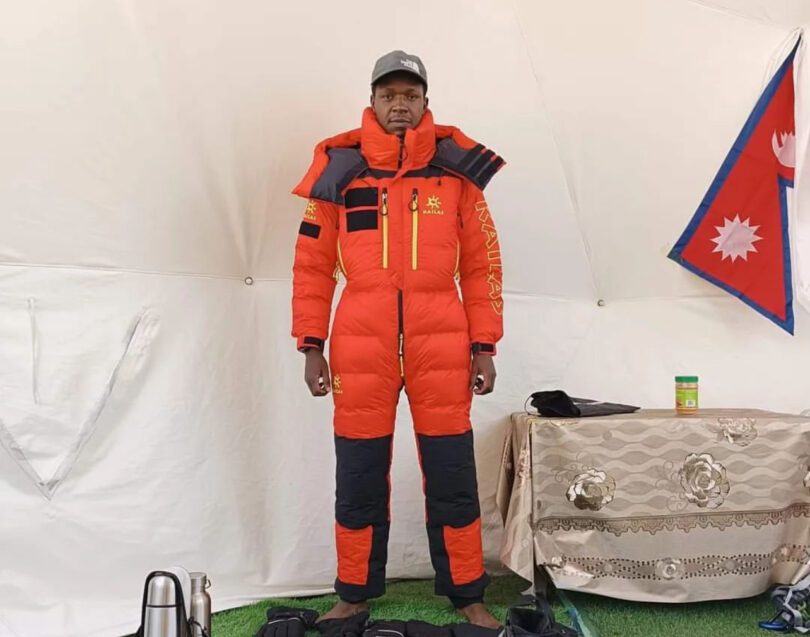The late Kenyan-born mountaineer Cheruiyot Kirui is the man behind the global wave of Mt Everest Kenyan climber. Kirui took his last breath while doing what he loved most; summiting. However, the gruelling nature of Mt Everest in the Himalayas gave him eternal rest but shocked of the world.
His passing on triggered a fierce debate across Kenyan socials as some praised his heroism in attempting to summit Mt Everest without supplemental oxygen. Others though, termed it an intentional journey of no return. All considered, Kirui breathed his last doing what he loved most; mountain climbing.
Table of Contents
Who Was Mt Everest Kenyan Climber?
Mt Everest Kenyan climber, Cheruiyot Kirui was a banker by profession, working with the Kenya Commercial Bank (KCB). His biggest dream was to summit Mt Everest standing at 8,848.86 metres above sea level without supplemental oxygen. Kirui kept his followers on Instagram abreast with his daring escapade in the Himalayas. But he went radio silent and missing on Wednesday, May 22 only to be found lifeless the following day.

The late Kenyan-born mountaineer Cheruiyot Kirui
He was together with a Nepali guide, Nawang Sherpa at the Everest’s death zone – 8,000 metres, just below the summit point. Sherpa’s body was still missing by the time of publishing this article. According to the Himalayan Times, the deceased Kenyan banker lost contact with Bishop Rock where he was. A search rescue by Seven Summit Treks discovered his body beneath the summit.
Everest hardly supports human life at higher elevations, and most mountaineers require additional oxygen above 7,000 meters to survive. Beyond 8,000 metres, mountaineers without supplemental oxygen enter the infamous zone of death. The air becomes exceedingly thin, the temperature drops to below freezing, and the strong winds make it harder to summit. So strong are the winds that they could sweep a human being away from the mountain. This zone is also prone to avalanches.
The greatest risk that the Mt Everest Kenyan climber faced was developing high-altitude cerebral edema (HACE) caused by oxygen starvation to the brain. It leads to brain swelling and haziness. Aware of the risk of failing to have supplemental oxygen, Kirui armed himself with medicine to battle any of these conditions. He had dexamethasone, nifedipine and acetaminophen among others but he never made it.

The late Kenyan-born mountaineer Cheruiyot Kirui attempted to summit Mt Everest. Photo/TV47
How Much Do You Need to Climb Mt Everest?
Kirui had a budget of $50,860 (roughly Ksh7 million) for his daring adventure. The cost covers his full trip with air tickets from Kenya to the Himalayas located on the border of China and Nepal. Further, the cost of hiring a mountain guide, climbing fee ($10,000) supplemental oxygen tank, tents and food among other things.
Unfortunately, he did not consider having supplemental oxygen. He explained in one of his Instagram posts that he would only climb to the summit without supplemental oxygen to know the limits of his body. He did but never reached the summit.
Who is the Famous Climber of Mount Everest?
The unsuccessful Mt Everest Kenyan climber sought to break a record by Tenzing Norgay (Tibet) and Edmund Hillary (New Zealand). The duo became the world’s first to ever summit Mt Everest where they spent 15 minutes on May 29, 1953. Many Indians and Nepalese Norgay a mythical after summitting the world’s highest mountain. Among his numerous honours were the Star of Nepal and the George Medal from Britain.
On the other hand, Hillary had no idea how much praise he would receive after the epic climb. He was knighted in London shortly after the expedition in 1953. Subsequently, he was appointed as New Zealand’s High Commissioner to Bangladesh, Nepal, and India from 1985 until 1988. Hillary received a great deal of additional recognition over the years, including the Order of the Garter in 1995. But throughout it all, he remained quite humble. His primary concern became the well-being of Nepal’s Himalayan people, particularly the Sherpas.

Mt Everest in the Himalayas. Photo/Adventure Alternative
Is Doug’s Body Still on Everest?
There are conflicting reports about Doug Hansen and Andy Harris’ bodies being found at the Everests. Some reports indicate that their bodies have never been found while others cite that they were found in 2005 by an expedition group. They were victims of the 1996 Mt Everest disaster that killed eight mountain climbers descending from the summit. A blizzard swept them away.
In 2016, National Geographic reported that less than 200 people reached the summit of Everest without using supplemental oxygen. Based on data from the Himalayan Database, as of January 2024, 217 people lost their lives while trying to climb Mount Everest from the Nepal side—the most common route. Another 110 people also lost their lives from the Tibet side.
The analysis is that 60% of the deaths from the Nepal side involved 130 climbers who did not use supplementary oxygen. On the Tibet side, 48 people who did not use supplemental oxygen perished, accounting for 44% of the overall deaths reported here.








